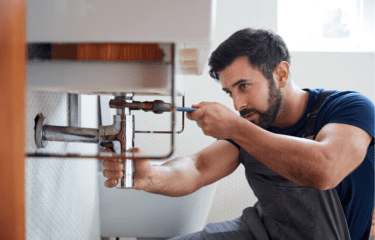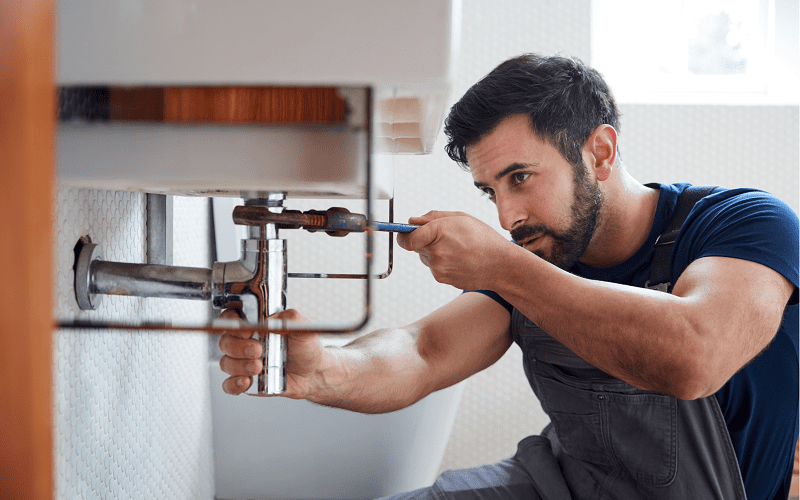
Toronto Homeowner’s Checklist for Renovation Walkthrough
A walkthrough is a final milestone in the renovation process and the last chance to iron out problems before inviting your clients back to admire the finished overhaul. It helps the contractor ensure that they have completed all the work listed in your final written agreement. The inspection involves a detailed investigation of every aspect of a project and ensures that the renovated property is up to scratch before completion.
Because there are so many tangible elements of a renovation project, it can be easy to miss small but essential details. With checklists, it’s easier not to overlook the details — from ensuring that everything is clean and in working order to making sure fixtures are level and drains are correctly functioning.
This guide addresses the most frequent renovation issues.
Contents
What to Check During a Final Walkthrough?
Flooring and Walls
- Ensure that the flooring is free of trash and dust.
- During the remodeling procedure, ensure there are no cracks or dents.
- Check the tiles on the floor to see if they are all on one level.
- To ensure a perfect finish, pay close attention to the tile joint.
- If you’re using marble as a flooring material, be sure it’s equally polished.
Tip: Confirm if the floor work has been finished successfully by walking barefoot.
- Make sure there are no paint splatters on the walls. Check for bubbles in your wallpaper if you have it installed.
Doors and Windows
- Examine your new windows and doors Toronto. Every window should open and close. Make sure there are no inconsistencies.
- Look, feel and listen to every fault with how the doors and windows move. Please make sure they’re in the proper order.
- Also, check the locks.
Note: After completing the home renovation and handing it over, ensure you change the locks.
Electrical
- It is the property owner’s responsibility to determine whether or not the lights can turn on and off correctly. Check each light switch across the entirety of the home.
- Electrical home appliances must function correctly, such as those listed below.
- Refrigerator
- Stovetop
- Washer
- Dishwasher
- Dryer
- Water heater
- Microwave
- Oven
- Use LED socket testers to examine each outlet found within the house.
- It’s time to turn on the furnace and the air conditioner. Put your hand in front of the vent. Check to see that they’re in good operational condition.
- Check that all of the smoke detectors are operating effectively.
Plumbing
- Ensure there are no leaks in any of the pipes.
- Check that all the taps and faucets in the kitchen, bathroom and toilet are operating correctly.
- To use the waste disposal, turn the switch on and off.
- Is the flush in the toilet working correctly, and does it return to a reasonable level after each use?
- Check to see that hot and cold water flows into the right channel in the bathroom.
- Perform leak checks on the shower and the bathtub to confirm that the taps are in good working order. Run the faucets for about two minutes to ensure that they drain correctly.
- It is critical to keep the uniform spacing between the tiles in the bathroom, including those on the floor and the shower wall. The grout lines must be constant, and no breaks in the tile.
Tip: Inquire with the contractor about the user guides, warranties, and other information regarding the upkeep of the household appliances since each homeowner would need to have a comprehensive grasp.
Renovations can be quite expensive, and as such, you need to know the exact service you are receiving and its cost. At Cheap Plumber Toronto, we understand all these and make it our aim to ensure you understand what the process entails. We will be glad to help you in all your plumbing renovation needs.
Carpentry
- Always inspect the quality of the craftsmanship on the custom furniture in your homes, such as:
- TV Unit and other Storage
- Shoes Cabinet
- Counters in the Dining Area (if there are any)
- Wardrobe
- Kitchen Cabinets and Storage
- Bookshelves and Other Counters and various other items
- Examine the edge of each piece of wood by touching it and feeling it. Check to see that the borders have an excellent finish. Sand the edges if they are sharp, mainly if there are children in the house.
- Examine the laminates for the presence of air bubbles.
- Ensure that all the doors and door handles on the cupboards and rooms are securely fastened attractively. Checking this requires you to open and close the door.
- Ensure that the fittings on the trolley are smooth so that it is easy to maneuver. Repeat opening and closing the trolley’s doors to check this.
- Examine each of the closets to ensure that the shelves are level and in the correct alignment. It is essential that the closet doors open and close correctly.
- Check that the medicine cabinets and mirrors in the bathroom have appropriate spacing and are at the correct level.
- Towel bars, shower curtain rods (if applicable), and toilet paper holders are examples of items that belong in a bathroom that needs leveling.
Even though you may be eager to have this whole process behind you, the walkthrough step is a vital part of the process. You always have the option of employing a third-party inspector to accompany you on the work if you feel overly threatened by it. It will provide an additional set of skillful eyes to assist in identifying any differences that may exist.
During the walkthrough phase, it is indispensable for you to voice any opinions or concerns. It would be best if you did not beat yourself up for being critical of a particular work feature. Contractors build their careers on the strength of their reputations, so they would much rather make good on a mistake they made than risk hearing you whine about it for years to follow.



Did you like the post? Share it